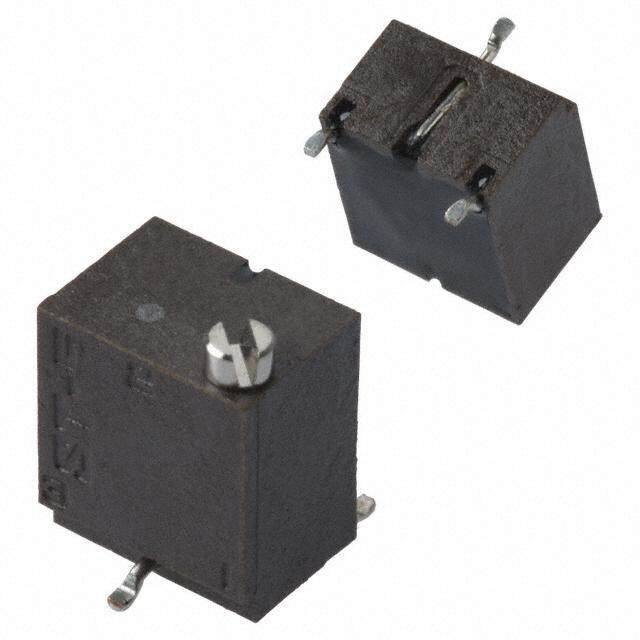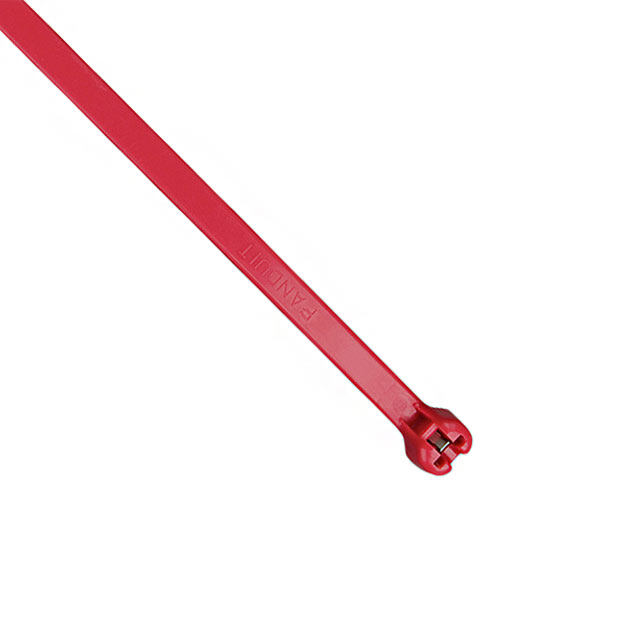ICGOO在线商城 > MIC2580A-1.0YTS
- 型号: MIC2580A-1.0YTS
- 制造商: Micrel
- 库位|库存: xxxx|xxxx
- 要求:
| 数量阶梯 | 香港交货 | 国内含税 |
| +xxxx | $xxxx | ¥xxxx |
查看当月历史价格
查看今年历史价格
MIC2580A-1.0YTS产品简介:
ICGOO电子元器件商城为您提供MIC2580A-1.0YTS由Micrel设计生产,在icgoo商城现货销售,并且可以通过原厂、代理商等渠道进行代购。 提供MIC2580A-1.0YTS价格参考以及MicrelMIC2580A-1.0YTS封装/规格参数等产品信息。 你可以下载MIC2580A-1.0YTS参考资料、Datasheet数据手册功能说明书, 资料中有MIC2580A-1.0YTS详细功能的应用电路图电压和使用方法及教程。
| 参数 | 数值 |
| 产品目录 | 集成电路 (IC)半导体 |
| 描述 | IC CTRLR HOTSWAP PCI PWR 24TSSOP热交换电压控制器 PCI Hot Swap Controller - Lead Free |
| 产品分类 | |
| 品牌 | Micrel Inc |
| 产品手册 | |
| 产品图片 |
|
| rohs | 符合RoHS无铅 / 符合限制有害物质指令(RoHS)规范要求 |
| 产品系列 | 电源管理 IC,热交换电压控制器,Micrel MIC2580A-1.0YTS- |
| 数据手册 | |
| 产品型号 | MIC2580A-1.0YTS |
| 产品 | Controllers & Switches |
| 产品培训模块 | http://www.digikey.cn/PTM/IndividualPTM.page?site=cn&lang=zhs&ptm=10849 |
| 产品目录页面 | |
| 产品种类 | 热交换电压控制器 |
| 供应商器件封装 | 24-TSSOP |
| 其它名称 | 576-1092 |
| 内部开关 | 两者兼有 |
| 功能引脚 | CRST, CSLEW, CSTART, /EPWRGD, /FAULT, /LPCIRST, /ON, /PCIRST, /POR, VPCHG |
| 包装 | 管件 |
| 可编程特性 | 限流,故障超时,压摆率 |
| 商标 | Micrel |
| 安装类型 | 表面贴装 |
| 安装风格 | SMD/SMT |
| 封装 | Tube |
| 封装/外壳 | 24-TSSOP(0.173",4.40mm 宽) |
| 封装/箱体 | TSSOP-24 |
| 工作温度 | -40°C ~ 85°C |
| 工作温度范围 | - 40 C to + 85 C |
| 工厂包装数量 | 62 |
| 应用 | CompactPCI™,PCI |
| 标准包装 | 62 |
| 特性 | 闭锁故障,发热限制 |
| 电压-电源 | 3.3V, 5V, ±12V |
| 电流-电源 | - |
| 电流-输出(最大值) | - |
| 电流限制 | 1.3 A |
| 电源电压-最大 | 3.5 V, 5.25 V, 12.6 V |
| 电源电压-最小 | 3.1 V, 4.75 V, 11.4 V |
| 电源电流 | 0.23 mA,4 mA, 2.2 mA |
| 类型 | 热交换控制器, 开关稳压器 |
| 系列 | MIC2580 |
| 输入/电源电压—最大值 | 3.5 V, 5.25 V, 12.6 V |
| 输入/电源电压—最小值 | 3.1 V, 4.75 V, 11.4 V |
| 通道数 | 4 |
| 通道数量 | 4 Channel |

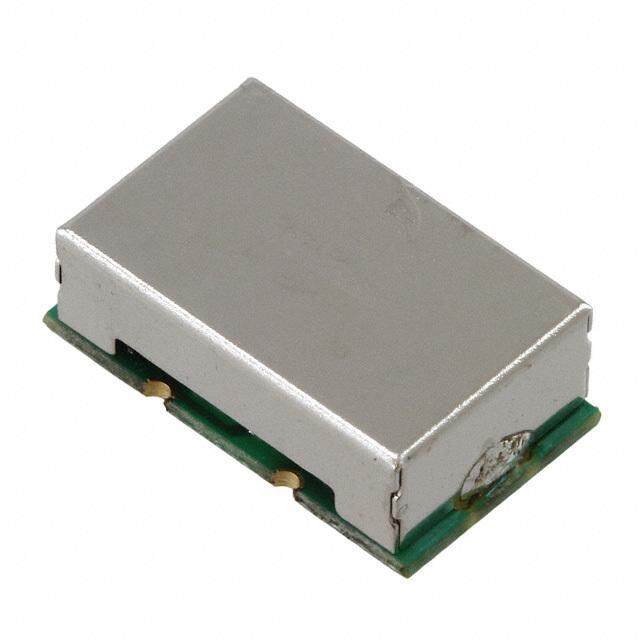
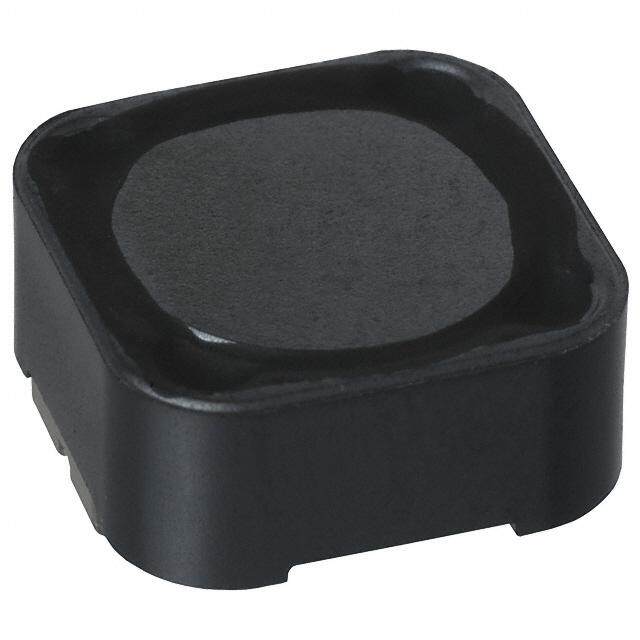
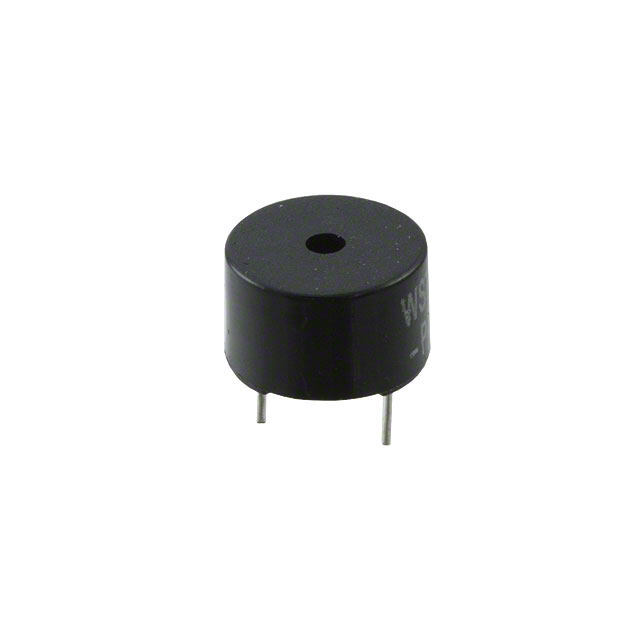
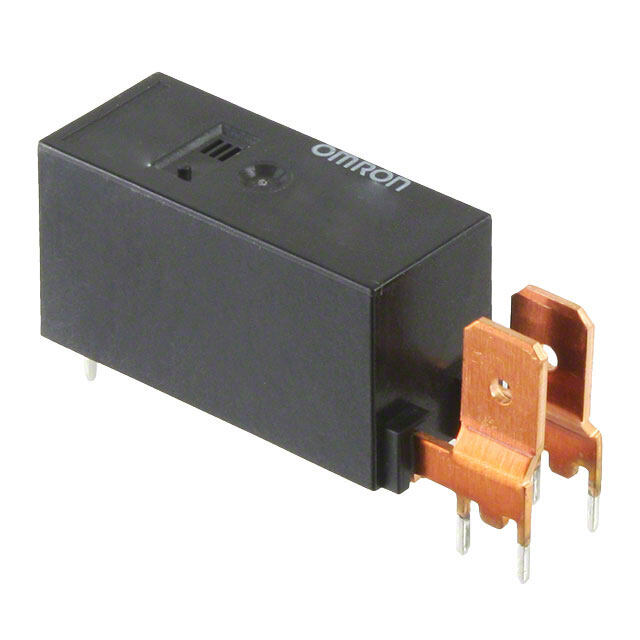
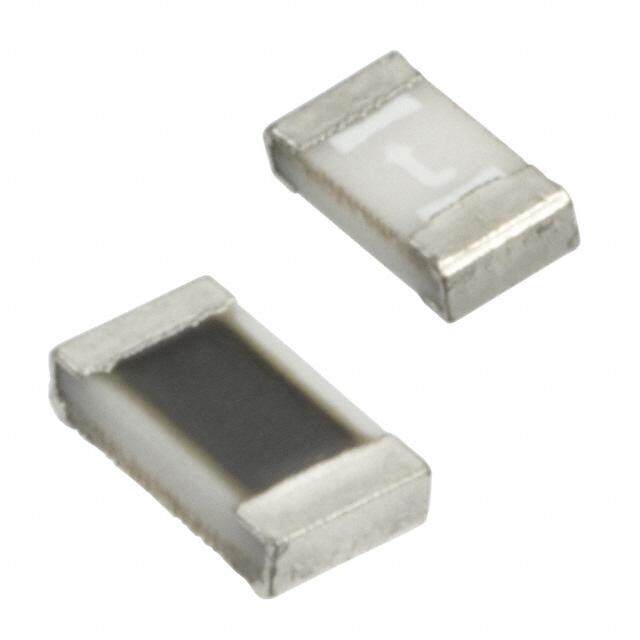
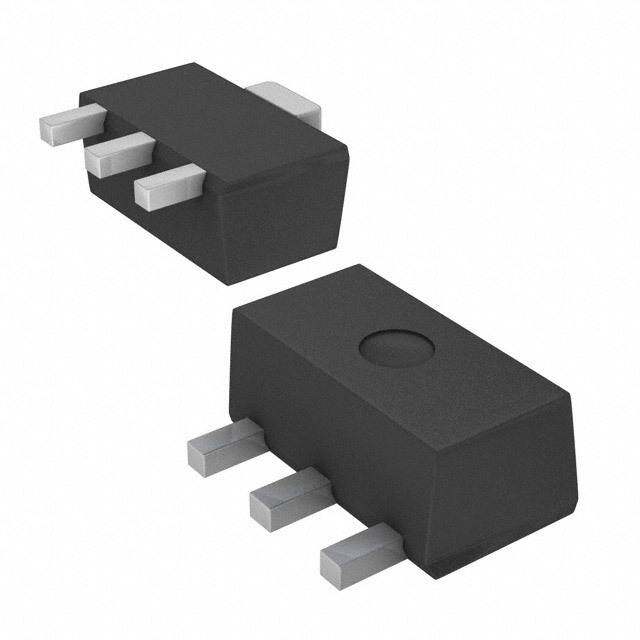

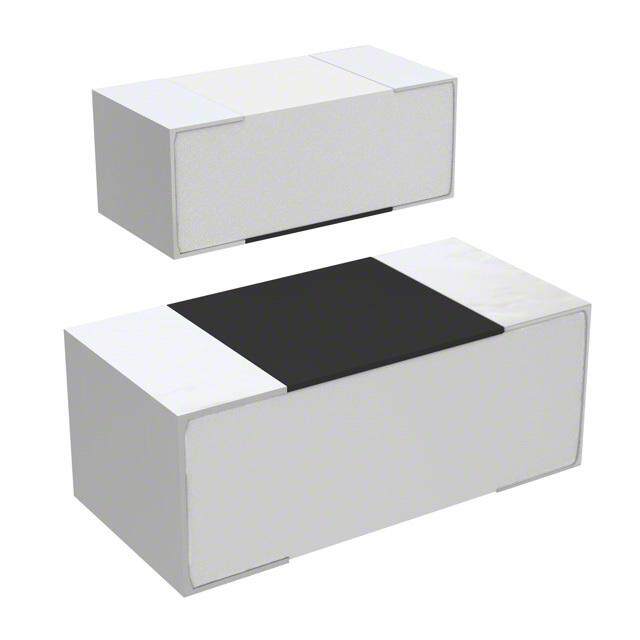

- 商务部:美国ITC正式对集成电路等产品启动337调查
- 曝三星4nm工艺存在良率问题 高通将骁龙8 Gen1或转产台积电
- 太阳诱电将投资9.5亿元在常州建新厂生产MLCC 预计2023年完工
- 英特尔发布欧洲新工厂建设计划 深化IDM 2.0 战略
- 台积电先进制程称霸业界 有大客户加持明年业绩稳了
- 达到5530亿美元!SIA预计今年全球半导体销售额将创下新高
- 英特尔拟将自动驾驶子公司Mobileye上市 估值或超500亿美元
- 三星加码芯片和SET,合并消费电子和移动部门,撤换高东真等 CEO
- 三星电子宣布重大人事变动 还合并消费电子和移动部门
- 海关总署:前11个月进口集成电路产品价值2.52万亿元 增长14.8%

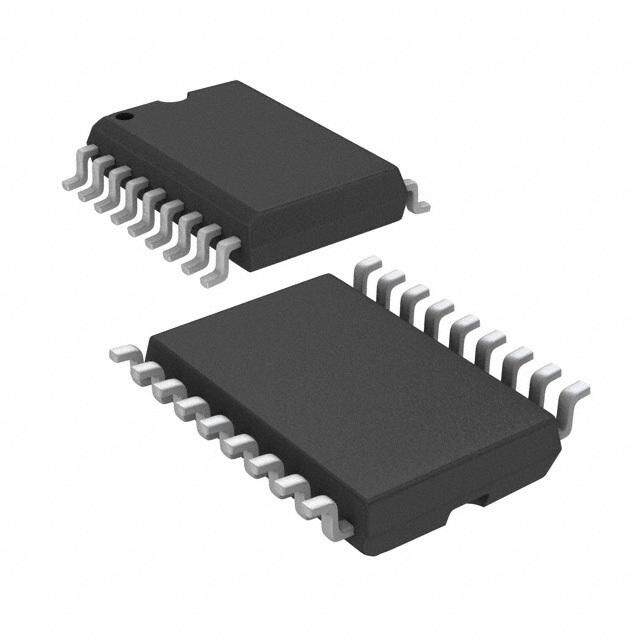
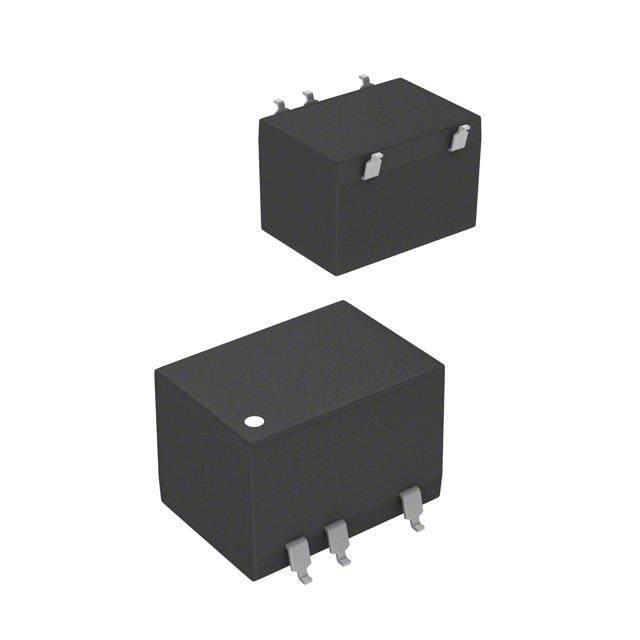
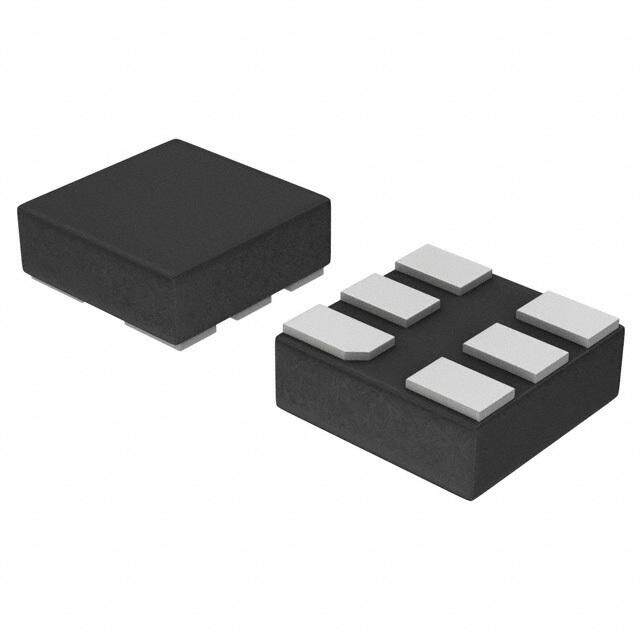

PDF Datasheet 数据手册内容提取
MIC2580A Micrel, Inc. MIC2580A Hot-Swap PCI Power Controller General Description Features The MIC2580A is a hot-swap controller that provides for safe • PCI hot-plug and CompactPCI™ hot-swap support and orderly insertion and removal of PCI based adapter cards • +12V, +5V, +3.3V, and –12V power supply control from a PCI hot-plug compliant system backplane or • Circuit breaker function to protect system CompactPCI™ system. • Programmable slew rate control for all supplies The MIC2580A incorporates a circuit breaker function that • Foldback current-limiting protects all four supplies (+12V, +5V, +3.3V, and –12V) upon • +5V and +3.3V programmable current-limit thresholds an overcurrent fault condition. Current foldback limiting pre- • Undervoltage and overcurrent diagnostic outputs vents large transient currents caused by plugging adapter • Deglitch filters on diagnostic fault outputs cards into live backplanes, such as in a CompactPCI system. • Integrated +12V and –12V MOSFET switches A programmable slew-rate control limits high inrush currents • Integrated high-side drivers for 3.3V and 5V external to all loads that occur when power is applied to large capaci- switches tive loads. • Precharge supply for CompatPCI™ I/O termination Voltage supervisory functions for all four power supplies are Applications provided by “power good” (/PWRGD) and “overcurrent fault” • PCI hot-plug systems (/FAULT) diagnostic outputs. Power good and overcurrent • CompactPCI™ hot-swap systems fault include deglitch filters to prevent nuisance tripping. Power good is active when all four supplies are within tolerance. Fault (/FAULT) goes active upon overcurrent or overtemperature conditions. The on-off control input (/ON) is used to cycle power to the adapter card. Typical Application 10mΩ IRF7413 1µF 10mΩ IRF7413 Platform Adapter MIC2580A +12V/1A +12V +12V 12VIN 12VOUT +5V/8A +5V 5VSENSE +3.3V/8A +3.3V 5VGATE GND GND +5V 5VIN 5VOUT –12V/1A –12V 3VSENSE 1µF 3VGATE +3.3V VIO VIO 3VIN 3VOUT 1µF VPCHG 1.2k /POR VIO VPCH = +1V ±(cid:31)20% /PCI_RST /PCIRST (PRECHARGE SUPPLY) /PCIRST CRST /BD_SEL /ON /ON /LPCIRST Overcurrent Fault CSLEW /FAULT /EPWRGD CSTART /HEALTHY /PGD /PWRGD GND –12V M12VIN M12VOUT 1µF /LPCIRST /ENUM D0 D0 PCI s D1 Controller D1 s u u B D2 D2 B a a at at D Dn Dn D CompactPCI™ Adapter with Early Power CompactPCI is a trademark of the PCI Industrial Computer Manufacturer’s Group. Micrel, Inc. • 2180 Fortune Drive • San Jose, CA 95131 • USA • tel + 1 (408) 944-0800 • fax + 1 (408) 474-1000 • http://www.micrel.com February 2005 1 MIC2580A
MIC2580A Micrel, Inc. Ordering Information Part Number Precharge Temperature Standard Pb-Free Voltage Range Package MIC2580A-1.0BTS MIC2580A-1.0YTS 1V –40°C to +85°C 24-lead TSSOP MIC2580A-1.6BTS MIC2580A-1.6YTS 1.6V –40°C to +85°C 24-lead TSSOP Pin Configuration 12VOUT 1 24 12VIN 3VGATE 2 23 5VGATE 3VOUT 3 22 5VOUT 3VSENSE 4 21 5VSENSE 3VIN 5 20 5VIN /PCIRST 6 19 /FAULT /LPCIRST 7 18 CSTART /EPWRGD 8 17 CSLEW /PWRGD 9 16 /POR VPCHG 10 15 CRST GND 11 14 /ON M12VIN 12 13 M12VOUT 24-lead TSSOP (TS) Pin Description Pin Number Pin Name Pin Function 1 12VOUT +12V Switched Supply (Output): Load carrying output. 2 3VGATE 3.3V Gate Drive (Output): Drives gate of external N-channel MOSFET +3V switch. Adding capacitance will slow the slew rate of the external MOSFET switch turn-on. (The external MOSFET’s gate is charged by an internal current source.) 3 3VOUT +3.3V Output Voltage Sense (Input): Connect to source of external N-channel MOSFET (+3V switched output) to monitor for output undervolt- age conditions. 4 3VSENSE +3.3V Current Sense (Input): Measures voltage drop across an external sense resistor with respect to 3VIN for overcurrent detection through the +3.3V switch. 5 3VIN 3V Supply (Input): +3.3V-supply input for current monitoring (reference input for 3VSENSE). Not a load-current carrying input. 6 /PCIRST PCI-Bus Reset (Input): Input from PCI bus that resets the internal logic. MIC2580A 2 February 2005
MIC2580A Micrel, Inc. Pin Number Pin Name Pin Function 7 /LPCIRST Local PCI Reset (Open-Drain Output): Local PCI reset output to PCI controller. Compliant to CompactPCI specification for LOCAL_PCI_RESET. 8 /EPWRGD Early Power Good (Open-Drain Output): This signal goes active should /FAULT or /PWRGD go active. No deglitch filtering is provided. This signal satisfies PCI /RST timing for T per PCI Local Bus Specification, ver- FAIL sion 2.1. 9 /PWRGD Power Good (Open-Drain Output): Active-low output goes active when all supplies are within tolerance. (A 20µs delay is inserted prior to activation to reduce nuisance tripping.) 10 VPCHG Precharge Supply (Output): (MIC2580A-1.0) +1V ±20% supply used for precharge bias for I/O terminations (CompactPCI only). 11 GND Ground 12 M12VIN –12V Supply (Input): Input for internal –12V switch. 13 M12VOUT –12V Switched Supply (Output): Switched –12V supply to PCI Hot Plug compliant socket. Load carrying output. 14 /ON On-Off Control (Input): Logic low turns on all switches; logic high turns off all switches. Also used to reset the device from a circuit breaker condition. The /ON pin is edge-triggered and requires a high-to-low transition once all four supplies are above their respective thresholds. 15 CRST Reset Delay (External Component): Connect to external capactior (C ) to RST increase power-on reset delay. 16 /POR Reset (Open-Drain Output): Active-low signal remains active for a time determined by C after all supplies are within tolerance; i.e., /PWRGD is RST active. This signal may be used as a reset for logic controllers. 17 CSLEW Slew (External Component): Connect to external capacitor (C ) to SLEW program the output slew rate of 3VGATE, 5VGATE, 12VGATE (internal) and M12VGATE (internal). 18 CSTART Start-Up Timer (External Component): Connect to external capacitor (C ) to increase the filter delay used to gate the /FAULT output upon START start-up. Used to prevent nuisance tripping during turn-on of supplies. 19 /FAULT Fault (Open-Drain Output/Input): This active-low output signal activated upon overcurrent or thermal shutdown. Includes 20µs deglitch filter. Fault is reset using /ON. Forcing pin low turns off all switches but does not activate the circuit breaker function. 20 5VIN 5V Supply (Input): +5V-supply input for current monitoring (reference voltage for 5VSENSE). Not a load-current carrying input. 21 5VSENSE +5V Current Sense (Input): Measures voltage drop across an external sense resistor with respect to 5VIN for overcurrent detection through the +5V switch. 22 5VOUT +5V Output Voltage Sense (Input): Connect to source of external N-channel MOSFET (+5V switched output) to monitor for output undervoltage condi- tions. 23 5VGATE 5V Gate Drive (Output): Drives gate of external N-channel MOSFET +5V switch. Adding capacitance will slow the slew rate of the external MOSFET switch turn-on. (The external MOSFET’s gate is charged by an internal current source.) 24 12VIN 12V Supply (Input): MIC2580A power supply and input for internal +12 switch. Supplies power for internal circuitry. February 2005 3 MIC2580A
MIC2580A Micrel, Inc. Absolute Maximum Ratings (Note 1) Operating Ratings (Note 2) Supply Voltages Supply Voltages +12V Input (V ).................................................+14V +12V Input (V ).............................+11.4V to +12.6V 12VIN 12VIN +5V Input (V ).......................................................+7V –12V Input (V )........................... –11.4V to –12.6V 5VIN M12VIN +3.3V Input (V )....................................................+7V +5V Input (V )................................... +4.75V to +5.25 3VIN 5VIN –12V Input (VM12VIN)...............................................–14V +3.3V Input (V3VIN)..............................+3.125V to +3.5V /PWRGD, /FAULT, /POR, /EPWRGD, and /PCIRST Temperature Range (T ) ...........................–40°C to +85°C A Output Current ...........................................................10mA Junction Temperature (T )........................................150°C J Lead Temperature (Soldering) Package Thermal Resistance (θ ) JA Standard Package (-x.xBTS) 24-Lead TSSOP..................................................83°C/W IR Reflow.........................................240°C + 0ºC/-5ºC Lead-free Package (-x.xYTS) IR Reflow.........................................260ºC + 0ºC/-5ºC ESD Rating, Note 3 Human body model...................................................2kV Electrical Characteristics V = 12V, V = 5V, V = 3.3V, V = –12V; T = 25°C, bold values indicate –40°C ≤ T ≤ +85°C; unless noted 12VIN 5VIN 3VIN M12VIN A A Symbol Parameter Condition Min Typ Max Units I Supply Current /ON > V 2.2 3 mA 12IN IH I 4 6 mA 5IN I 0.23 0.4 mA 3IN I 3 5 mA 12MIN V Undervoltage Lockout V increasing 8.9 9.8 V UVLO 12VIN V UVLO hysteresis 300 mV 12VIN V decreasing -10.5 -8.3 V M12VIN V UVLO hysteresis 100 mV M12VIN V increasing 2.1 3.1 V 5VIN V UVLO hysteresis 20 mV 5VIN V increasing 2.4 2.6 V 3VIN V UVLO hysteresis 60 mV 3VIN V 5VGATE Voltage 10.5 11 V 5VGATE V 3VGATE Voltage 10.5 11 V 3VGATE I 5VGATE Output Current during start-up, V = 5V –40 µA 5VGATE 5VGATE during turnoff; /FAULT = 0 6 mA I 3VGATE Output Current during start-up, V = 5V –40 µA 3VGATE 5VGATE during turnoff; /FAULT = 0 6 mA V Power Good Threshold Voltage V increasing 11 11.4 V PGTH 12VOUT V Power-Good hysteresis 200 mV 12VOUT V decreasing –11.2 –10 V M12VOUT V Power-Good hysteresis 50 mV M12VOUT V increasing 4.45 4.7 V 5VOUT V Power-Good hysteresis 100 mV 5VOUT V increasing 2.90 3.10 V 3VOUT V Power-Good hysteresis 60 mV 3VOUT V Input Voltage Level (/ON) logic low 0.8 V IL V logic high 2.0 V IH I Input Leakage Currnet (/ON) –1 1 µA IL MIC2580A 4 February 2005
MIC2580A Micrel, Inc. Symbol Parameter Condition Min Typ Max Units V Output-Low Voltage I = 2mA 0.4 V OL OL (/PWRGD, /FAULT, /POR, EPWRGD, /LPCIRST) T Overtemperature Shutdown T increasing 170 ˚C OV J Threshold T decreasing 160 ˚C J I CRST Charge Current during turn-on –9 –11.5 µA CRST I CSTART Charge Current during turn-on –9 –11.5 µA CSTART I CSLEW Charge Current during turn-on –30 –39 –45 µA CSLEW R Output MOSFET Resistance +12V internal MOSFET, I = 500mA 450 600 mΩ DS(on)12 DS R –12V internal MOSFET, I = 200mA 430 600 mΩ DS(on)M12 DS Output MOSFET Leakage +12V internal MOSFET –100 100 µA –12V internal MOSFET 0 300 µA V Current Limit Threshold Voltage V – V 45 56 67 mV CLTH 5VIN 5VSENSE V – V 45 55 67 mV 3VIN 3VSENSE I Current-Limit +12V internal MOSFET, ramped load 1.0 1.3 1.5 A LIM12 Threshold I –12V internal MOSFET, ramped load –0.4 –0.5 –0.7 A LIM12M Short-Circuit Current +12V internal MOSFET, V = 0V 140 mA OUT –12V internal MOSFET, V = 0V –170 mA OUT V Power-On Reset Threshold Voltage 2.4 V POR(thr) V Precharge Bias Supply MIC2580A-1.0, I = 10mA 0.8 1.0 1.2 V PCH PCH MIC2580A-1.6, I = 10mA 1.28 1.6 1.92 V PCH V Start-up Threshold Voltage 2.4 V START AC Parameters t Early Power-Good See Figure 4 200 ns GOOD Response Low t Early Power-Good See Figure 4 100 ns /GOOD Response High Undervoltage to Power-Good Delay 20 µs Current-limit to Fault Delay 20 µs +5V Current-Limit-to-Off Delay V = 10mΩ 7 µs SENSE Note 4 +3.3V Current-Limit-to-Off Delay V = 10mΩ 7 µs SENSE Note 4 +12V Current-Limit-to-Off Delay +12V 25 µs Note 4 –12V Current-Limit-to-Off Delay –12V 25 µs Note 4 Note 1. Exceeding the absolute maximum rating may damage the device. Note 2. The device is not guaranteed to function outside its operating rating. Note 3. Devices are ESD sensitive. Handling precautions recommended. Human body model, 1.5k in series with 100pF. Note 4. Off refers to the condition in which the circuit breaker turns all outputs off. February 2005 5 MIC2580A
MIC2580A Micrel, Inc. Timing Diagrams /ON /ON +5V +5V 5VOUT Short Circuit 5VOUT 0V 0V +3.3V 3VOUT +3.3V 3VOUT 0V 0V +12V +12V 12VOUT 12VOUT 0V 0V 0V 0V M12VOUT M12VOUT –12V –12V /PWRGD /PWRGD t START /FAULT /FAULT t RESET /POR /POR Figure 1. Controller Timing: Normal Cycle Figure 2. Controller Timing: Enable Into Short Circuit Breaker(cid:0) Reset /ON Fault +5V 5VOUT 0V +3.3V 3VOUT 0V +12V 12VOUT 0V 0V M12VOUT V IN (cid:0) V (cid:0) }1(cid:0)V PGTH –12V t t /good good /PWRGD +5V /EPWRGD 0V /FAULT (cid:0) Figure 3. Controller Timing: Short on 5V Figure 4. Early Power Good Response Time (cid:0) MIC2580A 6 February 2005
MIC2580A Micrel, Inc. Typical Characteristics Power-On Output Rise Time vs. Start-Up Reset Time Slew-Rate Capacitance Time 100x10-3 100x10-3 100x10-3 10x10-3 10x10-3 10x10-3 ME (s) ME (s) ME (s)1x10-3 TI TI TI 1x10-3 1x10-3 100x10-6 100x10-6 100x10-6 10x10-6 0.001 0.01 0.1 0.0001 0.001 0.01 0.1 0.0001 0.001 0.01 0.1 C (µF) C (µF) C (µF) POR SLEW START February 2005 7 MIC2580A
MIC2580A Micrel, Inc. Functional Characteristics 10mΩ(cid:0) IRF7413 10mΩ(cid:0)IRF7413 MIC2580A +12V 12VIN 12VOUT +5V 5VSENSE C12L R12L +3.3V 5VGATE 5VIN 5VOUT 3VSENSE C5L R5L (cid:0) 3VGATE 3VIN 3VOUT +5V VPCHG C3L R3L 2.2k 2.2k /POR CRST /PCIRST CRST 2.2k 2.2k /ON /LPCIRST C SLEW CSLEW /FAULT /EPWRGD CSTART CSTART /PWRGD GND –12V M12VIN M12VOUT C R M12L M12L Functional Test Circuit MIC2580A 8 February 2005
MIC2580A Micrel, Inc. (cid:0) 3V and 5V (cid:0) Gate-Voltage Response (cid:0) C = 0.01µF(cid:0) RST V/ON(cid:0) C = 0.03µF(cid:0) (5V/div) SLEW C = 0.01µF START (cid:0) VCSLEW(cid:0) (5V/div) V3VGATE(cid:0) (5V/div) (cid:0) V5VGATE(cid:0) (cid:0) (5V/div) Time (2.5ms/div) Power-On(cid:0) Reset Response (cid:0) C = 0.01µF RST V/ON(cid:0) (cid:0) (10V/div) V/PWRGD(cid:0) (5V/div) VCRST(cid:0) (2V/div) t = 2.6ms (cid:0) V/POR(cid:0) RESET (cid:0) (5V/div) Time (1ms/div) Power-Good(cid:0) Response (cid:0) V/EPWRGD(cid:0) (5V/div) V/PWRGD(cid:0) (5V/div) (cid:0) (cid:0) Time (10µs/div) February 2005 9 MIC2580A
MIC2580A Micrel, Inc. C = 0.01µF RST (cid:0) Fault Response (cid:0) V/ON(cid:0) (10V/div) Pull /FAULT Low V/FAULT(cid:0) (10V/div) V3VOUT(cid:0) (5V/div) V5VOUT(cid:0) (5V/div) V12VOUT(cid:0) (10V/div) (cid:0) VM12VOUT(cid:0) (cid:0) (10V/div) Time (10ms/div) MIC2580A 10 February 2005
MIC2580A Micrel, Inc. (cid:0) Turn-On and Turn-off (cid:0) C = 0.01µF V/ON(cid:0) START (10V/div) CSLEW = 0.03µF(cid:0) C = 0.01µF RST V3VOUT(cid:0) (5V/div) (cid:0) V5VOUT(cid:0) (5V/div) V12VOUT(cid:0) (cid:0) (10V/div) (cid:0) VM12VOUT(cid:0) (10V/div) V/PWRGD(cid:0) (5V/div) V/POR(cid:0) (5V/div) V/FAULT(cid:0) (5V/div) Time (2.5ms/div) (cid:0) -12V Turn-On (cid:0) C = 0.01µF V/ON(cid:0) START (10V/div) CSLEW = 0.07µF(cid:0) C = 0.01µF(cid:0) RST VCSTART(cid:0) CM12L = 1µF(cid:0) (5V/div) R = 80Ω(cid:0) M12L VM12VOUT(cid:0) (10V/div)(cid:0) (cid:0) IM12VIN(cid:0) (cid:0) (100mA/div)(cid:0) 150mA (cid:0) (cid:0) (cid:0) V/PWRGD(cid:0) (5V/div) V/POR(cid:0) (5V/div) V/FAULT(cid:0) (5V/div) Time (2.5ms/div) February 2005 11 MIC2580A
MIC2580A Micrel, Inc. (cid:0) 3V Turn-On (cid:0) V/ON(cid:0) CSTART = 0.01µF (10V/div) C = 0.03µF(cid:0) SLEW C = 0.01µF(cid:0) RST C = 100µF(cid:0) VCSTART(cid:0) 3L (5V/div) R3L = 2.2Ω(cid:0) V3VOUT(cid:0) (2V/div) 1.5A I3VIN(cid:0) (cid:0) (1A/div) 0.6A/ms (cid:0) V/PWRGD(cid:0) (5V/div) V/POR(cid:0) (5V/div) V/FAULT(cid:0) (5V/div) Time (2.5ms/div) (cid:0) 5V Turn-On (cid:0) C = 0.01µF V/ON(cid:0) CSTART = 0.03µF(cid:0) (10V/div) SLEW C = 0.01µF(cid:0) RST C = 100µF(cid:0) VCSTART(cid:0) R5L = 3.3Ω(cid:0) (5V/div) 5L V5VOUT(cid:0) (5V/div) 1.5A I5VIN(cid:0) 0.375A/ms (cid:0)(cid:0) (1A/div) V/PWRGD(cid:0) (5V/div) V/POR(cid:0) (5V/div) V/FAULT(cid:0) (5V/diV) Time (2.5ms/div) MIC2580A 12 February 2005
MIC2580A Micrel, Inc. (cid:0) 12V Turn-On (cid:0) C = 0.01µF V/ON(cid:0) START (10V/div) CSLEW = 0.04µF(cid:0) C = 0.01µF(cid:0) RST C = 1µF(cid:0) V(C5SVT/AdRivT)(cid:0) R1122LL = 80Ω(cid:0) V12VOUT(cid:0) (10V/div) 150mA I12VIN(cid:0) (cid:0) (100mA/div) (cid:0) V/PWRGD(cid:0) (5V/div) V/POR(cid:0) (5V/div) V/FAULT(cid:0) Time (1ms/div) (5V/div) Enable Into(cid:0) -12V Output Short Circuit (cid:0) C = 0.01µF(cid:0) V/ON(cid:0) START (10V/div) CSLEW = 0.01µF(cid:0) C = 0.01µF(cid:0) RST R = 100Ω(cid:0) VCSTART(cid:0) 12L (5V/div) C12L = 1µF(cid:0) M12VOUT = GND V3VOUT(cid:0) (5V/div) (cid:0) V5VOUT(cid:0) (5V/div) V12VOUT(cid:0) (cid:0) (10/div) (cid:0) VM12VOUT(cid:0) (10V/div) IM12VIN(cid:0) (200mA/div) V/PWRGD(cid:0) (5V/div) V/POR(cid:0) (5V/div) V/FAULT(cid:0) (5V/div) Time (1ms/div) February 2005 13 MIC2580A
MIC2580A Micrel, Inc. Enable Into(cid:0) 3V Output Short Circuit (cid:0) C = 0.01µF V/ON(cid:0) START (10V/div) CSLEW = 0.01µF(cid:0) C = 0.01µF(cid:0)(cid:0) RST 3VOUT = GND(cid:0) VCSTART(cid:0) R = 100Ω(cid:0) (5V/div) 12L C = 1µF(cid:0) V3VOUT(cid:0) 12L (5V/div) RM12L = 100Ω(cid:0) C = 1µF(cid:0) M12L (cid:0) I3VIN(cid:0) (1A/div) (cid:0) (cid:0) V5VOUT(cid:0) (5V/div) V12VOUT(cid:0) (10V/div) VM12VOUT(cid:0) (10V/div) V/PWRGD(cid:0) (5V/div) V/POR(cid:0) (5V/div) V/FAULT(cid:0) (5V/div) Time (1ms/div) Enable Into(cid:0) 5V Output Short Circuit (cid:0) C = 0.01µF START V/ON(cid:0) C = 0.01µF(cid:0) (10V/div) SLEW C = 0.01µF(cid:0) RST R = 100Ω(cid:0) V(C5SVT/AdRivT)(cid:0) C1122LL = 1µF(cid:0) R = 100Ω(cid:0) V3VOUT(cid:0) M12L (5V/div) CM12L = 1µF(cid:0) 5VOUT = GND V5VOUT(cid:0) (5V/div) I5VIN(cid:0) (cid:0) (200mA/div) (cid:0) V12VOUT(cid:0) (10V/div) VM12VOUT(cid:0) (10V/div) V/PWRGD(cid:0) (5V/div) V/POR (5V/div) V/FAULT(cid:0) Time (1ms/div) (5V/div) MIC2580A 14 February 2005
MIC2580A Micrel, Inc. Enable Into(cid:0) 12V Output Short Circuit (cid:0) V/ON(cid:0) CSTART = 0.01µF(cid:0) (10V/div) C = 0.01µF(cid:0) SLEW C = 0.01µF(cid:0) RST C = 1µF(cid:0) 12L VCSTART(cid:0) R = 100Ω(cid:0) (5V/div) M12L C = 1µF(cid:0) V3VOUT(cid:0) M12L (5V/div) 12VOUT = GND V5VOUT(cid:0) (5V/div) (cid:0) V12VOUT(cid:0) (cid:0) (10V/div) I12VIN(cid:0) (500MA/div) VM12VOUT(cid:0) (10V/div) V/PWRGD(cid:0) (5V/div) V/POR(cid:0) (5V/div) V/FAULT(cid:0) Time (1ms/div) (5V/div) Start-up Blanking Response (cid:0) V/ON(cid:0) CSTART = 0.01µF (10V/div) C = 0.01µF(cid:0) SLEW C = 0.01µF(cid:0) RST (cid:0) VCSTART(cid:0) (5V/div) V5VOUT(cid:0) Short Removed (5V/div) (cid:0) (cid:0) (cid:0) I5VIN(cid:0) (200mA/div) V/PWRGD(cid:0) (5V/div) V/POR(cid:0) (5V/div) V/FAULT(cid:0) (5V/div) Time (1ms/div) February 2005 15 MIC2580A
MIC2580A Micrel, Inc. Circuit Breaker(cid:0) Reset Response (cid:0) New Start Cycle C = 0.01µF ON#(cid:0) START (10V/div) CSLEW = 0.01µF(cid:0) Circuit Breaker C = 0.01µF RST 3VOUT(cid:0) (5V/div) Short Circuit 5VOUT(cid:0) (5V/div) 12VOUT(cid:0) (cid:0) (10V/div) (cid:0) M12VOUT(cid:0) (10V/div) PWRGD#(cid:0) (5V/div) FAULT#(cid:0) (5V/div) POR#(cid:0) (5V/div) Time (10ms/div) MIC2580A 16 February 2005
MIC2580A Micrel, Inc. Functional Diagram 12VIN 12V 12VOUT Switch R 5VIN 5VSENSE 5SNS Sw5iVtch 5VGATE Q5OUT Control 5VOUT R 3VIN 3VSENSE 3SNS S3w.3itVch 3VGATE Q3OUT Control 3VOUT VPCHG Precharge Supply CSLEW Slew /POR Control CSLEW Reset CRST C RST Current Limit Thermal Shutdown /FAULT /ON Control Logic and tD = 20µs CSTART Power Good (delay) C START /EPWRGD tD = 20µs /PWRGD (delay) /LPCIRST /PCIRST –12V M12VOUT M12VIN Switch MIC2580A GND February 2005 17 MIC2580A
MIC2580A Micrel, Inc. Functional Description Thermal Shutdown The +12V and –12V internal MOSFET switches are protected Start-Up Sequence by current limit and overtemperature shutdown circuitry. The start-up sequence iniates after all four supplies are When the die temperature exceeds 160°C, /FAULT is as- connected to the inputs and then /ON is asserted by serted and all supplies are shut off. The power dissipated in transistioning from high to low. During the start-up sequence, the MIC2580A is primarily due to the sum of current flowing all four gates ramp up at a rate determined by C . During SLEW through the internal MOSFET switches and, to a lesser this time /PWRGD is deasserted until all four supplies are extent, power dissipated due to the supply current. To com- within specified levels. When /PWRGD is asserted the power- pute the total power dissipation of the MIC2580A the follow- on-reset signal /POR timer begins. The time period is defined ing equation is used: by C . Refer to Figure 1 for a timing diagram of the signals RST P = P + P + P during the start-up sequence. D(total) D(+12V switch) D(–12V switch) D(supplies) where: During the start-up sequence, a current source charges C at a constant rate until a threshold voltage of 2.4V is P = R × I 2 START D(switches) DS(on) OUT reached. This period of time defines an interval during which P = V × I D(supplies) SUPPLY SUPPLY overcurrent events are ignored. This prevents high inrush To relate this to operating junction temperature: currents that normally occur when charging capacitance erroneously asserting /FAULT. The magnitude of the start- TJ = PD × θJA + TA up time, t is defined by C . where: START START T = ambient temperature The MIC2580A employs foldback current limiting that en- A sures the device starts up in current limit. This minimizes high θ = package thermal resistance JA inrush currents due to ramping a voltage into capacitance Precharge Voltage regardless of the size of the load capacitance. For CompactPCI applications, the MIC2580A-1.0BSM/BTS Overcurrent Detection integrates a 1V ±20% voltage source that satisfies The MIC2580A senses overcurrent via the use of external CompactPCI precharge requirements. The voltage source sense resistors for the 5V and 3.3V supply rails. When the can provide up to 10mA. For higher current, the MIC2580A- sense voltage across these resistors is greater than or equal 1.6BSM/BTS integrates a 1.6V ±20% voltage source to bias to 50mV an overcurrent condition is detected. Therefore the a NPN transistor. overcurrent set point is determined by I = 50mV/R . LIMIT SENSE +5V For the +12V and –12V supply rails overcurrent detection is set internally at 1.3A and –0.5A respectively. MIC2580A-1.6 R When an overcurrent condition is detected /FAULT is as- serted only if the overcurrent condition lasts for a minimum VPCHG time period of 10µs. This delay prevents spurious noise from I > 10mA the system erroneously tripping the circuit breaker and as- serting /FAULT. Upon /FAULT being asserted an internal DATA(cid:0) BUS latch is set that immediately turns off all four supplies to prevent further damage to the system. Toggling /ON will reset Figure 5. Voltage Source the latch and initiate another start-up sequence. Figures 2 Turnoff and 3 depict the timing for two fault conditions. Deasserting /ON will turn off all four supplies. Alternatively driving /FAULT low will turn off all supplies but will not latch the supplies off. Releasing /FAULT will initiate a new start sequence. MIC2580A 18 February 2005
MIC2580A Micrel, Inc. Application Information must also be added to the dc voltage drop across the MOSFET to compute total loss. In addition to meeting the Whenever voltage is applied to a highly capacitive load, high voltage regulation specifications, thermal specifications must inrush currents may result in voltage droop that may bring the also be considered. During normal operation very little power supply voltage out of regulation for the duration of the should be dissipated in the MOSFET. DC power dissipation transient. The MIC2580A solves this problem by specifically of the MOSFET is easily computed as I2R where I is the controlling the current and voltage supply ramps so that the DS drain current and R is the specified on-resistance of the system supply voltages are not disturbed. Very large capaci- DS MOSFET at the expected operating drain current. However, tive loads are easily supported with this device. during excessive drain current or short-circuit faults, the Figure 1 shows the timing during turn-on. When /ON is forced power dissipation in the external MOSFET will increase low, all supplies are turned on at a slew rate determined by the dramatically. To help compute the effective power dissipated external capacitor, CSLEW. during such transients, MOSFET manufacturers provide Figure 2 shows the foldback characteristics for the supply transient thermal impedance curves for each MOSFET. voltages. This foldback affect bounds the magnitude of the These curves provide the effective thermal impedance of the current step when the supplies are turned on or shorted. This MOSFET under pulsed or repetitive conditions; for example, specifies the compact PCI specification of 1.5A/ms, thereby as will be the case when enabling into a short circuit fault. ensuring reliable operation. In discrete FET implementa- From these curves the effective rise in junction temperature tions, this magnitude can exceed several amps and may of the MOSFET for a given condition can be computed. The cause the main supply to go out of regulation during this equation is given as: transient event. This, in turn, could cause the system to peak T = PDM × Z + T J θJA A behave unpredictably. In addition, should a fault occur, the where PDM is the power dissipated in the MOSFET usually MIC2580A will prevent system malfunctions by limiting the computed as V x I and Z is the thermal response current to within specifications. IN DRAIN θJA factor provided from the curves. Since the MIC2580A re- MOSFET Selection duces the current to 30% of full scale even under severe faults The external MOSFET should be selected to provide low such as short-circuits the MOSFET power dissipation is held enough dc loss to satisfy the application’s voltage regulation to safe levels. This feature allows MOSFETs with smaller requirements. Note that the voltage across the sense resistor packages to be used for a given application thereby reducing cost and PCB real-estate requirements. 10mΩ IRF7413 SPuopwpelry MIC2580A 10mΩ IRF7413 Platform Adapter 12V 12V/500mA +12V 12VIN 12VOUT +5V 5VSENSE +3.3V 5VGATE 5V 5V/5A GND 5VIN 5VOUT –12V 3VSENSE 3VGATE 3.3V 3.3V/7.6A 3VIN 3VOUT +5V VPCHG /POR /PCIRST CRST GND PCI Hot-Plug Controller /ON /LPCIRST CSLEW /FAULT /EPWDGD CSTART /PWDGD GND –12V –12V /100mA /CIRST M12VIN M12VOUT BUS EN /CIRST /CIRST D0 D0 D1 s Bus DD12 SBwuitsch D2 a Bu a at at Dn D D Dn Figure 6. Hot-Plug PCI Application February 2005 19 MIC2580A
MIC2580A Micrel, Inc. CompactPCI™ BD_SEL# Pin Tied to Ground PCB Layout Considerations For applications that use system backplanes with the To achieve accurate current sensing Kelvin connections are BD_SEL# pin tied to ground, the MIC2580A /ON pin is edge recommended between the supply pin and the respective sensitive. Therefore, the /ON pin requires a delay circuit for sense resistor as shown in Figure 8. PCB trace length should proper start-up when the board has already been inserted be kept at a minimum. 0.02 inches per ampere is a minimum into the backplane and the supplies are switched off, then width for 1 oz. copper to prevent damage to traces carrying back on. The circuit, shown in the figure below, allows the high current. Keep these high-current traces as short as MIC2580A /ON pin to transition from high to low which is possible. necessary for start-up. The delay time may be increased or short-length, high-current(cid:0) decreased by changing the RC time constant in the circuit, (wide) copper traces but the delay time must exceed the ramp time of all system sense resistor backplane supplies. The same circuit is functional for hot swap insertion. from(cid:0) to(cid:0) supply load Kelvin(cid:0) MIC2580A connections 2k /FAULT V to(cid:0) to(cid:0) IO 2k (3.3V or 5V) VIN(cid:0) SENSE(cid:0) /RESET pin pin /ON Figure 8. Layout Recommendation 1N914 50k On PCB 10k 1.2k 2N3904 BD_SEL# 3.3µF Figure 7. /ON Pin Assertion Delay Circuit MIC2580A 20 February 2005
MIC2580A Micrel, Inc. Package Information 4.50 (0.177)(cid:0) DIMENSIONS:(cid:0) 6.4 BSC (0.252)(cid:0) 4.30 (0.169) MM (INCH) (cid:0) 0.30 (0.012)(cid:0) 0.19 (0.007) 7.90 (0.311)(cid:0) 7.70 (0.303) 1.10 MAX (0.043) 0.20 (0.008)(cid:0) 0.09 (0.003) 0.65 BSC(cid:0) 1.00 (0.039) REF (0.026)(cid:0) 8°(cid:0) (cid:0) 0.15 (0.006)(cid:0) 0°(cid:0) 0.70 (0.028)(cid:0) 0.05 (0.002) 0.50 (0.020) 24-Lead TSSOP (TS) MICREL INC. 2180 FORTUNE DRIVE SAN JOSE, CA 95131 USA TEL + 1 (408) 944-0800 FAX + 1 (408) 474-1000 WEB http://www.micrel.com This information furnished by Micrel in this data sheet is believed to be accurate and reliable. However no responsibility is assumed by Micrel for its use. Micrel reserves the right to change circuitry and specifications at any time without notification to the customer. Micrel Products are not designed or authorized for use as components in life support appliances, devices or systems where malfunction of a product can reasonably be expected to result in personal injury. Life support devices or systems are devices or systems that (a) are intended for surgical implant into the body or (b) support or sustain life, and whose failure to perform can be reasonably expected to result in a significant injury to the user. A Purchaser’s use or sale of Micrel Products for use in life support appliances, devices or systems is a Purchaser’s own risk and Purchaser agrees to fully indemnify Micrel for any damages resulting from such use or sale. © 2001 Micrel Incorporated February 2005 21 MIC2580A
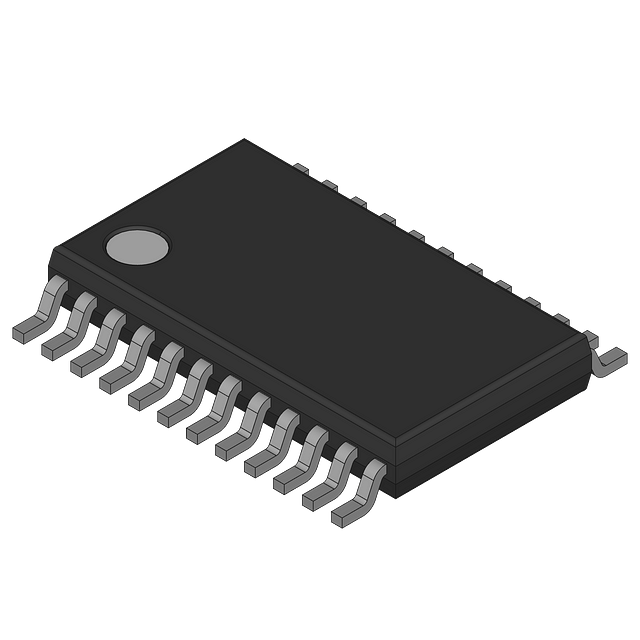
 Datasheet下载
Datasheet下载


